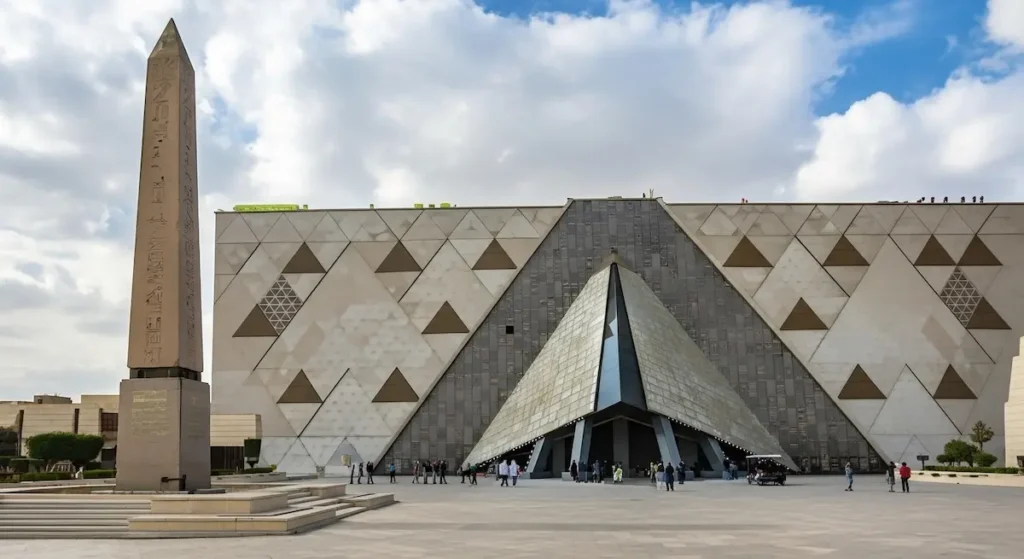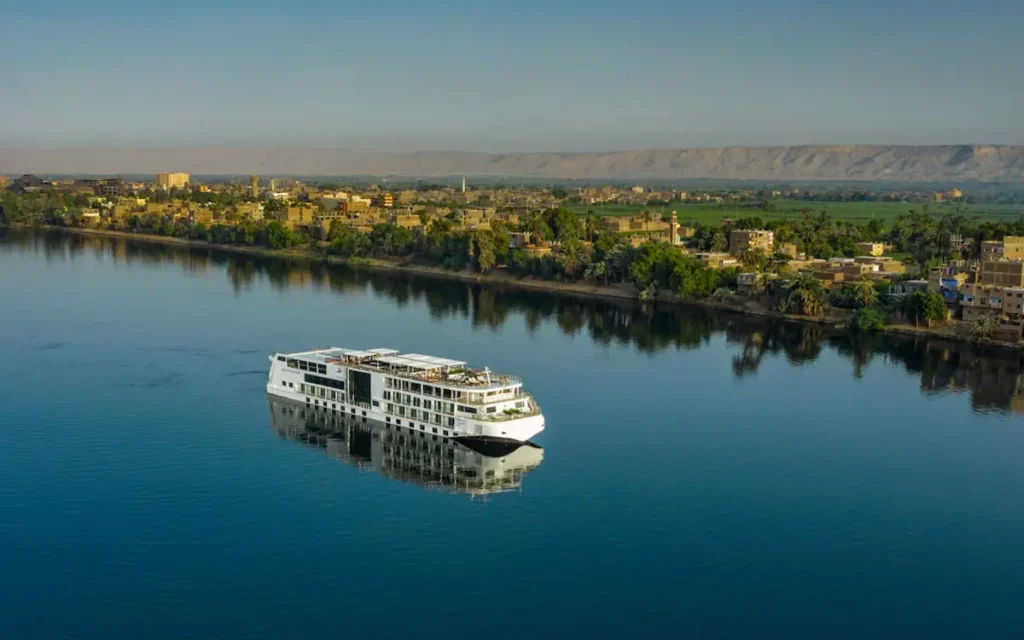Luxor Museum Guide
Luxor Museum Guide 2025: Discover Egypt’s Hidden Treasure of Ancient Artifacts
The Luxor Museum is a standout cultural site in Egypt that is very captivating, and it gives its visitors a refined and immersive experience of the wealth of ancient Thebes. Contrary to the extensive and at times confusing halls of the Cairo Egyptian Museum, the Luxor Museum shows off a very select collection, thus providing tourists with a more focused and clear view of the glorious past of Egypt. Since 1975, the museum has been linking the visitors of the modern world with the ancient world’s knowledge, thus becoming a must-visit spot for whoever is in Luxor’s riverside and the historic core.
Each piece in the museum tells a story, whether it is a royal mummy or a pharaoh’s statue, an artifact found in a temple, tomb, or from everyday life along the Nile. The display is modern, well-lit, and always set up in a way that every piece is able to stand out and be recognized rather than blend in with the crowd.
The Luxor Museum is not only a stop for those who love history, students, and tourists, but also a place of revelation. It is very intimate, and one can see the whole history of Egypt by digesting it without being overwhelmed or stabbed with the whole sunray experience. No doubt, the Luxor Museum is a must-see for those interested in learning more about Egypt’s legacy and understanding the art that was the empire’s hallmark.
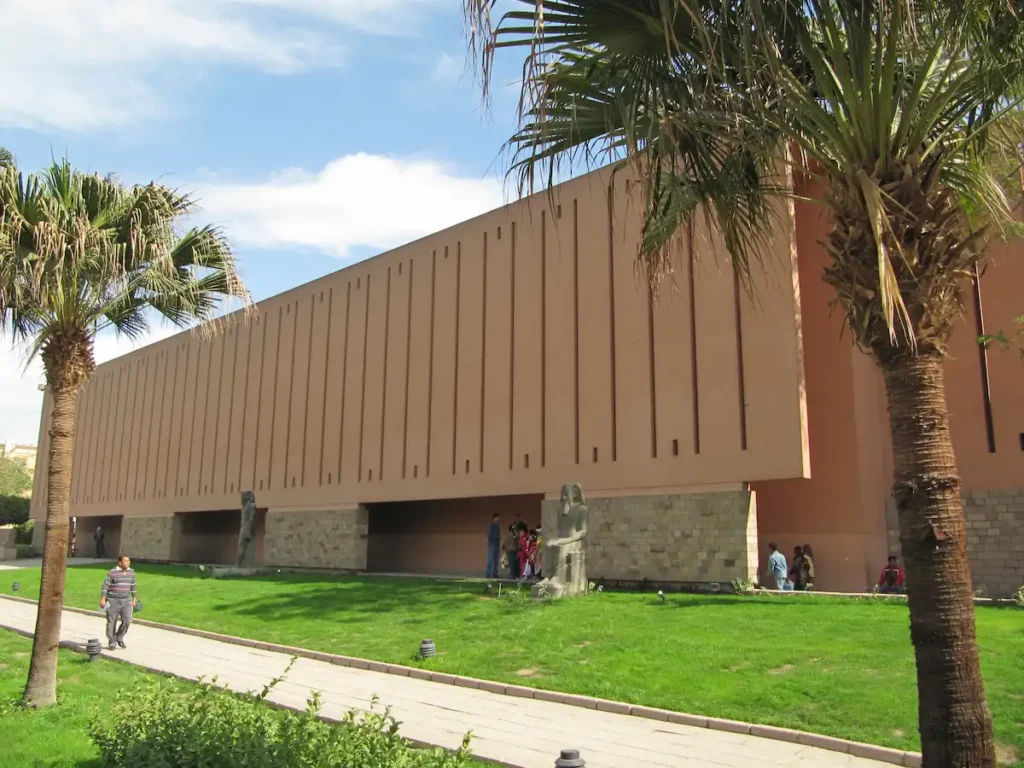
2. History of the Luxor Museum
The Luxor Museum’s doors were first opened in 1975, and the whole process was supported and monitored by the Ministry of Antiquities of Egypt, and UNESCO participated in this as well. The reason behind the opening of this museum was mainly to keep the artifacts that were found while excavating in and around ancient Thebes, modern-day Luxor. Unlike other traditional museums, the Luxor Museum’s mission is to display only local finds, thus imparting a more genuine image of the town’s historical and cultural identity.
The idea was to develop a space that would evoke the beauty and mood of ancient Egyptian art through selected masterpieces, rather than the sheer quantity of objects. A good number of the museum’s artifacts are such that they were taken from the nearby temples like Karnak and Luxor Temple, and also from the tombs in the Valley of the Kings.
Statues from the Luxor Cachette, discovered in 1989 near the Temple of Luxor, and the mummies of pharaohs Ahmose I and Ramses I exhibited in the museum’s lower gallery, are among its most prized collections. The Luxor Museum became a model of preservation and presentation due to the international conservation standards ensured by its partnership with UNESCO.
Learn more about Egypt’s ancient economy and treasures in our History of Currency in Egypt or explore nearby sites in the Luxor Temples Guide.
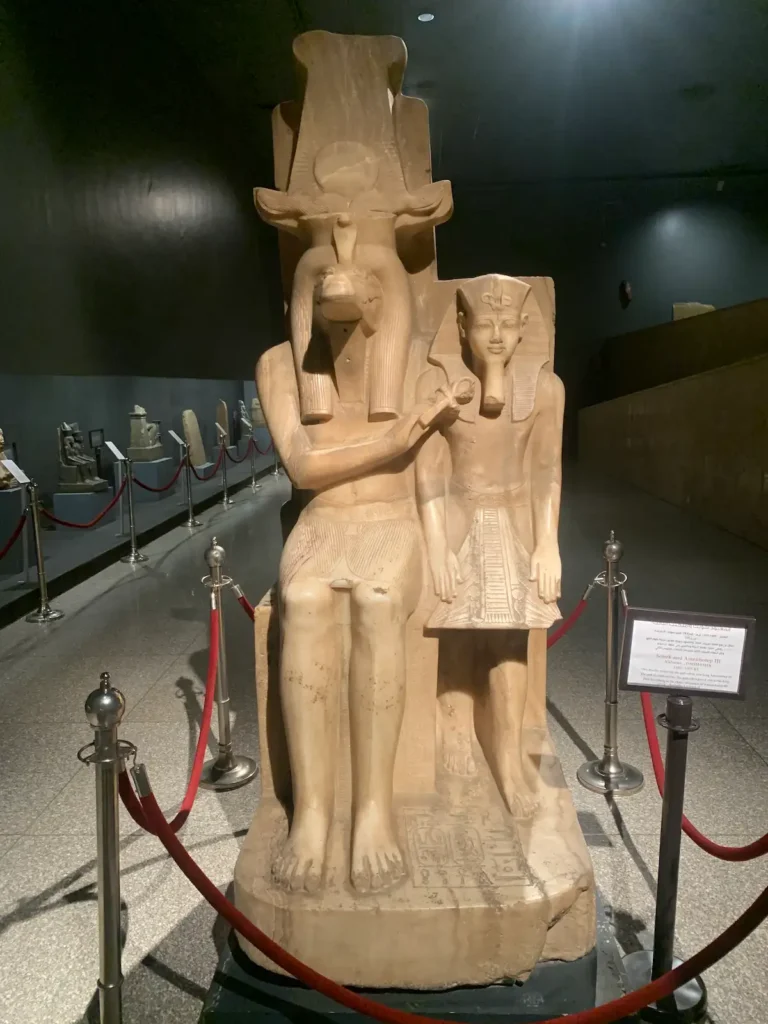
statue of Sobek and Amenhotep III
3. Layout & Highlights of the Museum
The Luxor Museum is planned to have been executed very cautiously in a two-level spatially framed thought linking up the history of Egypt in a gently pulsating nexus mode. Each of the two levels is firmly designed around the staging of epochs in which particular themes take center stage and hence lead seamlessly from the grandeur of the New Kingdom into the fine art of daily life in ancient Egypt.
On display are, then, often compared quantities of monumental statues, coffins, from the temples of Luxor, sculptures that astonish at their actuality, yet that have been unearthed from another cache, the Luxor Cachette. It was discovered near the Luxor Temple in 1989. With their gods and Pharaohs, such as those identifiable in Amenhotep III and Thutmose III, they are distinguished by a particularly good preservation status and exciting lighting conditions, which give them a near-life impression.
Upstairs, browsers land into smaller, rarer things that help them understand all the intricate details of ancient Egyptian civilization. These are made available jewelry, pottery, tools, funerary stelae, and fragments of temple reliefs. Among them, the Royal Mummies Exhibit certainly fits the description. It includes mummies belonging to Ahmose I and Ramses I, who are displayed with great respect and in an educational context.
The museum’s modern lighting system and minimalist architecture make the artifacts more beautiful without distractions. Each room feels intimate, allowing visitors to appreciate each object’s handiwork and its meaning. Anyone whose ambitions run the gamut of the Luxor Museum, perhaps finding the most remarkable highlights there of ancient Egyptian antiquities, gets the luckiest experience when visiting this museum.
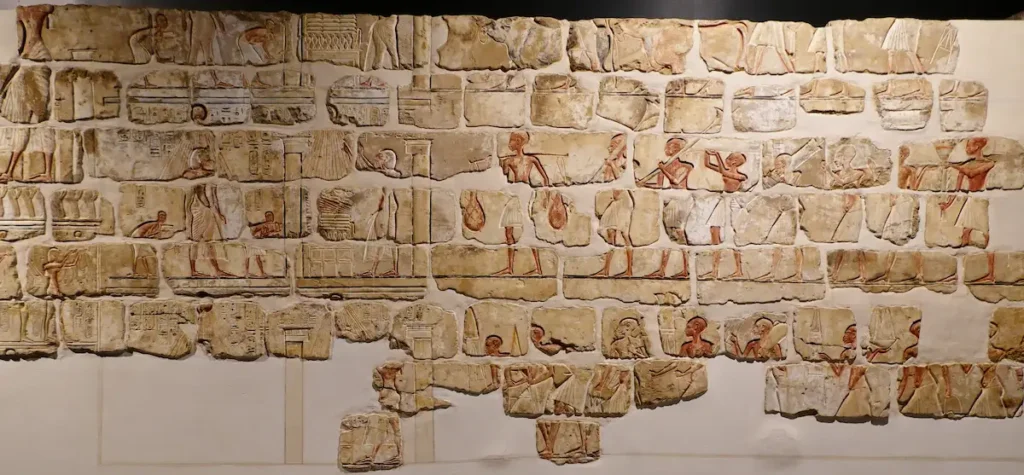
4. Must-See Exhibits in Luxor Museum and Things To See in Luxor Museum
The Luxor Museum Guide is a treasure chest of Egypt’s timeless heritage, housing some of the most remarkable artifacts ever discovered in Upper Egypt. Among its many wonders, several exhibits stand out as absolute must-sees for visitors seeking to deepen their understanding of the pharaohs and their world.
a) The Royal Mummies Hall – This section holds the preserved remains of two powerful rulers as Luxor attractions: Ahmose I, founder of the 18th Dynasty, and Ramses I, the patriarch of the 19th Dynasty. The setting is respectful and atmospheric, allowing visitors to come face-to-face with ancient royalty.
b) The Statue of Amenhotep III and Sobek – A breathtaking masterpiece, this dual statue symbolizes harmony between humanity and divinity. The god Sobek, protector of the Nile, stands beside Amenhotep III, representing balance and unity between nature and kingship.
c) Artifacts from Tutankhamun’s Tomb – While the boy king’s main treasures rest in Cairo, the Luxor Museum Guide features exquisite jewelry, ceremonial weapons, and personal items that once belonged to him, offering a glimpse into royal life.
d) The Theban Wall Reliefs – These authentic temple carvings vividly depict daily life, craftsmanship, and rituals from ancient Thebes.
For a deeper connection to Egypt’s royal legacy, explore our Valley of the Kings Guide.
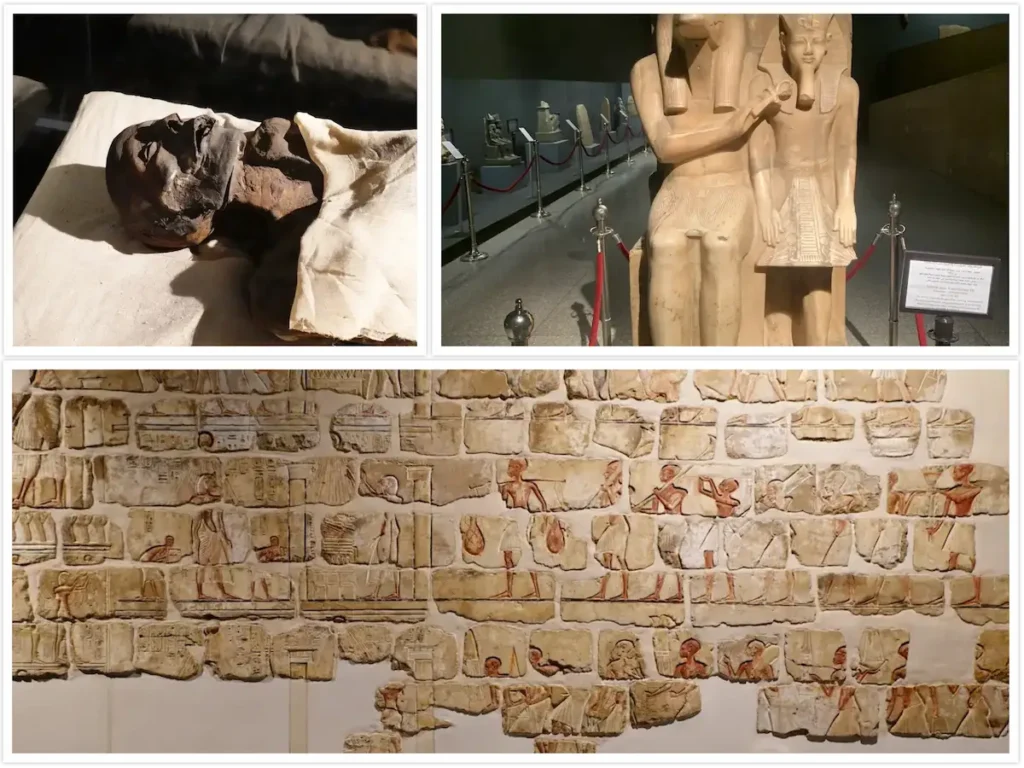
5. Visiting Information For The Luxor Museum, Egypt
In Luxor, the Luxor Museum is situated right on the Nile Corniche, which makes it very convenient both from the city’s downtown area and from the major hotels. It is only a few minutes away by car, carriage, or even on foot if the hotel is nearby. The fact that it is on the bank of the river contributes a lot to the tranquility, and being by the Nile at sunset is really something special.
Usually, the museum is open on all days of the week from 9:00 AM until 9:00 PM, giving many choices to be visited or included in an evening tour. Service is of high quality, and many options are open, and the nationalities’ cuisines are also included. Entry to the Luxor Museum is of value for money, with prices for students being lower, and there are even Luxor Pass options that can offer you discounts. The use inside the museum is mostly restricted because of the quality of the light and the security, but in some areas it might be allowed for an additional charge.
For a less crowded environment and the art effect of lighting to be intensified, one must pay a visit somewhere around late afternoon or early evening. For sure, if you decide to go for a guided tour, you will certainly get the most out of it as these are made available by experts on Egypt who manage to infuse a very unique and interesting angle in the presentation, hence making the statues and mummies come to life. Therefore, it is a very good idea to spend some time, say, around 1-1.5 hours for the complete visit.
No matter if you sit just a casual visitor or you are a loyal history enthusiast, Luxor Museum will take you on an exclusive journey through the golden days of Egypt without any noisy crowds around you, while still having the chance of exploring temples and tombs in the neighborhood.
6. Luxor Museum vs. Cairo Museum
When you make a comparison between the Luxor Museum and the Cairo Egyptian Museum, you will find the major disparity to be the one between the quantity and quality of exhibits. The Egyptian Museum in Cairo is the biggest one, having more than 120,000 exhibits in its collections that include the whole of King Tut’s treasures, and is a place where one can find the original.
On the other hand, the Luxor Museum gives a smaller but really carefully selected experience. The stuff is laid out really beautifully; it is supported by modern lighting, and the explanations are very short, which is good, and are in English and Arabic. This actually helps people who watch the exhibits one by one not to get perplexed.
In the case of someone who is visiting Upper Egypt, the museum of Luxor adds a lot of information about the history of Thebes that goes very well with places like the Karnak and the Luxor Temples nearby. And of course, a lot of tourists prefer it over Cairo as they have a lot of exhibits to see there.
Your choice depends on your travel style:
-
Cairo Museum for a grand overview of Egypt’s civilization.
-
Luxor Museum for an elegant, focused experience that ties directly to the surrounding archaeological landscape.
To plan your perfect trip through both cities, check out our detailed Egypt Travel Guide.
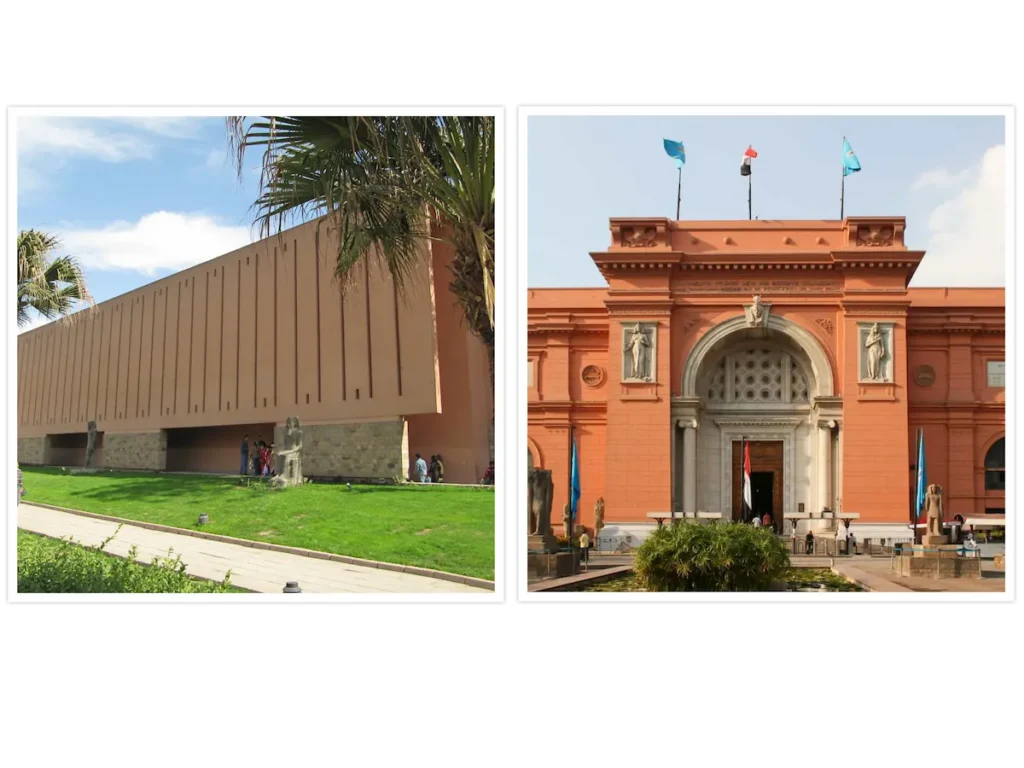
7. Nearby Attractions to Combine With Your Visit
Located in an ideal position for tourists who don’t want to be far from other points of interest, the Luxor Museum is but a brief walk away from the wonderful Luxor Temple, which becomes one of Egypt’s proudest landmarks, particularly the moment it is lit up at night. One of the things that one must do when in Luxor is to take a walk between the Luxor and Karnak temples along the mountain-flanked winding road. Such a link was arranged for the religious festivals held by the pharaohs, and at the same time, it continues to the present day.
We’re not trying to fit too much into one day, but if you have the energy, then hike up the Nile Corniche to have a seaside dinner by the river. Chances are you will still have time to visit an Egyptian-themed market before the evening is over, or maybe have fun at a sound and light show at Karnak Temple.
In order to continue your adventure after the sun goes down, you should go through our detailed guide on Luxor Night Tours, which showcases the most exciting nighttime activities, such as a Nile cruise and an open-air dinner. By adding the Luxor Museum together with the other interesting places around it, you can have a day in Luxor that is both educational and fun on the same day, thus discovering a lot of the local culture and leisure.
8. Insider Tips for Travelers
To enjoy the Luxor Museum the most, you’d better be there at an off-peak time, and one of the best is either in the early morning or late afternoon when the museum is less crowded and has a more tranquil ambiance. The museum is air-conditioned, so you will not feel the heat, but it is still a good idea to wear light, loose clothes and sturdy pairs of shoes, as you might want to check out the other nearby attractions afterward.
If you hire a licensed Egyptologist as a guide, you will get a significantly better visit by having rich context and fascinating stories behind each artifact. If you are going to visit a lot of places, then one of the passes (Luxor Pass, Egypt Pass) will save you a lot of money and give you access to museums and archaeological areas throughout the country.
It is not allowed to take pictures in the museum unless you get permission, so do not forget to ask about the museum’s policy before you get in. Besides, spend some time at the cafes along the Nile Corniche, where feluccas pass by as they are very open and quiet, and they provide an ideal position to daydream about the history of Egypt. With some preparation, your visit to the Luxor Museum will not only be a gain of knowledge but also a quite personal and unforgettable experience.
-
🕓 Visit during off-peak hours — early morning or late afternoon for fewer crowds and a calmer experience.
-
🧭 Hire a licensed Egyptologist guide to gain deeper insights into each exhibit and historical context.
-
🎟️ Buy a Luxor Pass or Egypt Pass to save money if you plan to visit multiple museums and temples.
-
👟 Dress comfortably — light, breathable clothing and comfortable shoes are ideal for exploring nearby attractions.
-
📸 Check photography rules before entering, as some areas may restrict cameras or charge a small fee.
-
☕ Relax at the Nile Corniche cafés after your visit for beautiful river views and a peaceful atmosphere.
-
🚕 Plan transportation — the museum is centrally located, easily reached by taxi, carriage, or a short walk from most hotels.
-
🕰️ Allow 1–1.5 hours for your visit to fully appreciate the exhibits without rushing.
✅ Quick Tip: Combine your museum visit with the Luxor Temple or a Nile evening stroll for the perfect cultural and scenic experience.
9. FAQs About the Luxor Museum
How much time do you need to visit the Luxor Museum?
Most visitors spend 1 to 1.5 hours exploring the museum. The space is well-organized and not overly large, allowing you to enjoy each exhibit without feeling rushed.
Are guided tours available?
Yes, several licensed Egyptologist guides and tour companies offer professional museum tours. Booking a guide ensures you understand the historical context of the artifacts and get a richer, more meaningful experience.
Can you take photos inside?
Photography is restricted in certain areas, but some sections allow it for a small additional fee. Always check the current policy at the entrance before taking pictures.
Is the museum child-friendly?
Absolutely. The Luxor Museum is a calm, air-conditioned environment that’s perfect for families. Children often enjoy the mummies, statues, and interactive storytelling provided by guides.
10. Conclusion
The unusual thing about the Luxor Museum is that it is one of Egypt’s beautiful time capsules brought to date and updated for presenting to the whole world. As opposed to the enormous and sometimes overcharged halls of the Cairo Museum, Luxor’s version is rather cozy and well-thought-out; thus, it gives the visitors a real feeling of connection with the pharaonic past of the city. Every showcase, be it the royal mummies or the magnificent statues of Amenhotep III, is exhibited flawlessly, and as is common for museums with well-designed displays, the lighting is perfect, and the modern design complements the exhibits.
The Luxor Museum visit does not just augment the knowledge of ancient Egypt but also goes well to other sites in the area like the Karnak and Luxor Temples, the Valley of the Kings, and the calm Nile Corniche. It is a sought-after spot for visitors who wish to be a little off the beaten path, be thoughtful, quite reflective, and blend with the culture.
If you are passionate about history, photography, and family trips, the Luxor Museum will be an amazing experience that you will not forget.


